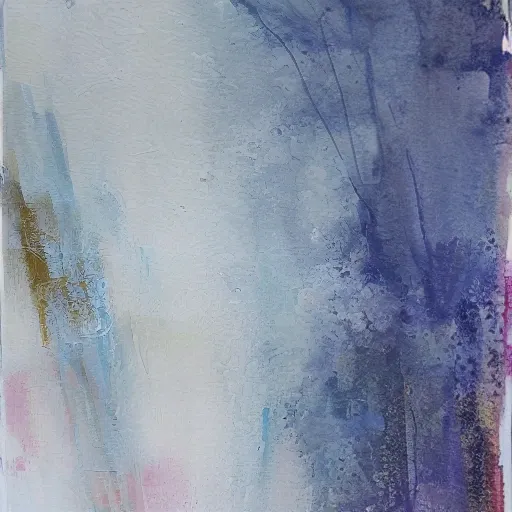Light Source: Incorporate a single, dominant light source that casts intricate and dynamic shadows.

Light Source: Incorporate a single , dominant light source that casts intricate and dynamic shadows. This light source can be natural , such as sunlight filtering through a canopy of trees , or artificial , like a softly glowing lamp in a dim room. Composition: Construct a balanced composition that draws the viewer's eye and guides their gaze through the artwork. Consider employing the rule of thirds or leading lines to create visual interest and flow. Contrasting Textures: Utilize different textures to contrast and enhance the visual impact of your piece. Experiment with smooth and rough surfaces , incorporating elements like wispy brushstrokes , delicate washes , and areas of heavy impasto to add depth and tactile interest. Color Palette: Choose a harmonious yet evocative color palette that amplifies the mood of the scene. Consider cool tones like blues , purples , and grays for shadows , and warmer hues like soft yellows and muted oranges for the illuminated areas. Introduce subtle variations within these tones to create a sense of nuance and realism. Focal Point: Establish a focal point within your composition , where the convergence of light and shadows is most prominent. This focal point should captivate the viewer and convey a sense of tranquility , wonder , or contemplation. Emotive Atmosphere: Infuse your artwork with a particular atmosphere or mood that resonates with the viewer. Whether it's a sense of calmness , mystery , or introspection , the ambiance should evoke an emotional response and invite the audience to delve deeper into the artwork's narrative. Symbolic Elements: Consider incorporating symbolic elements that add layers of meaning and provoke thought. For example , you could include objects that represent the passage of time , the fragility of life , or the duality of existence. These symbolic elements should harmonize with the overall theme of light and shadows. Scale and Dimension: Experiment with scale and perspective to create a sense of depth and dimension in your artwork. Incorporate various sizes of objects or figures to establish a visual hierarchy and a greater illusion of three-dimensionality. Fine Detailing: Pay attention to intricate details , such as delicate patterns of light , subtle gradients , and the precise rendering of textures. These details will contribute to the overall realism and refinement of your artwork. Emotional Connection: Ultimately , strive to establish an emotional connection between the viewer and your artwork. Encourage contemplation , introspection , or a sense of wonder , drawing the audience into the world you've created. ,
{ "seed": "1209890943", "steps": 30, "width": 512, "height": 512, "version": "SD1.4_SH", "sampler_name": "k_dpm_2", "guidance_scale": 7.5 }
Created on: 5/17/2023, 12:07:05 AM